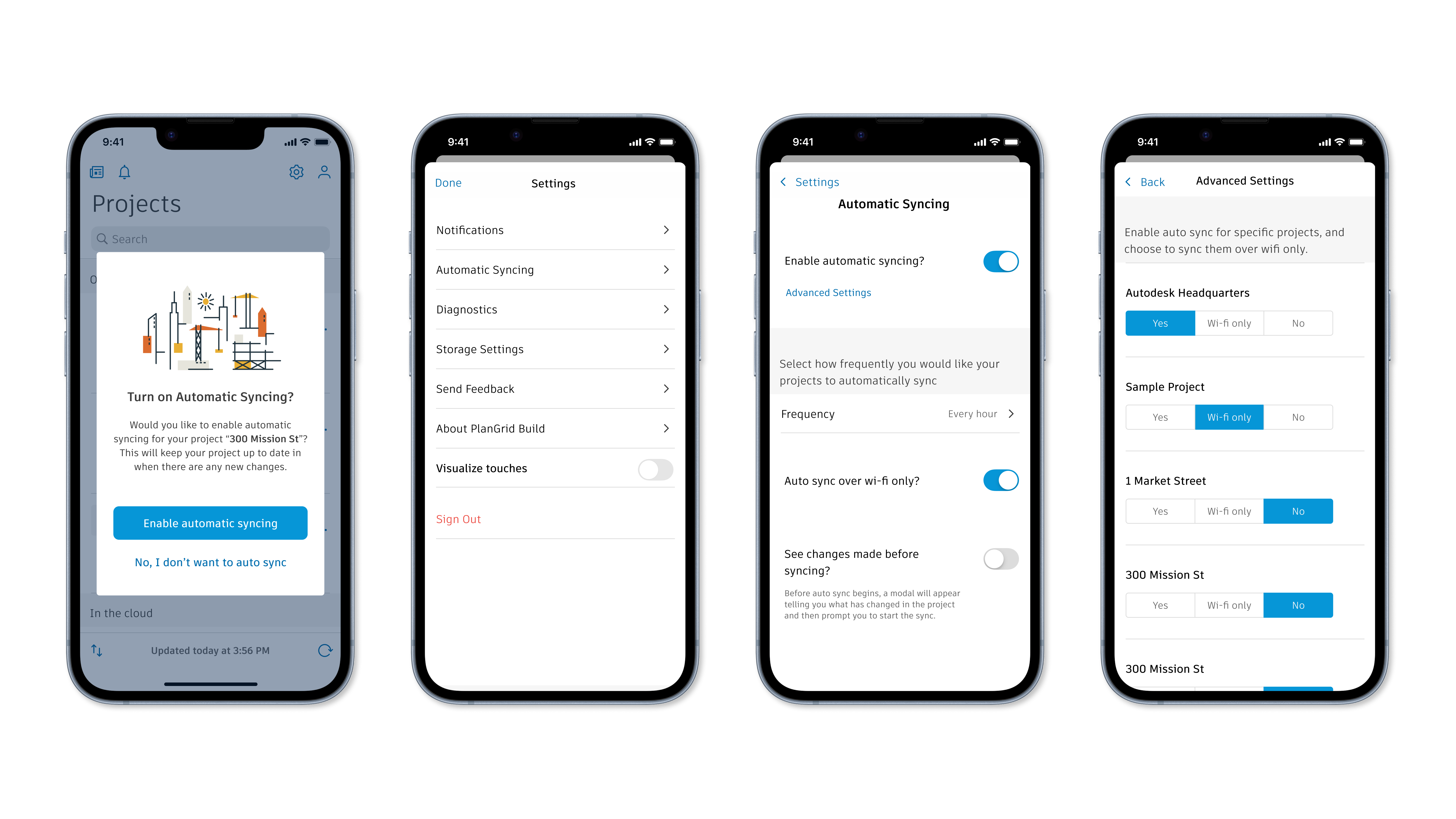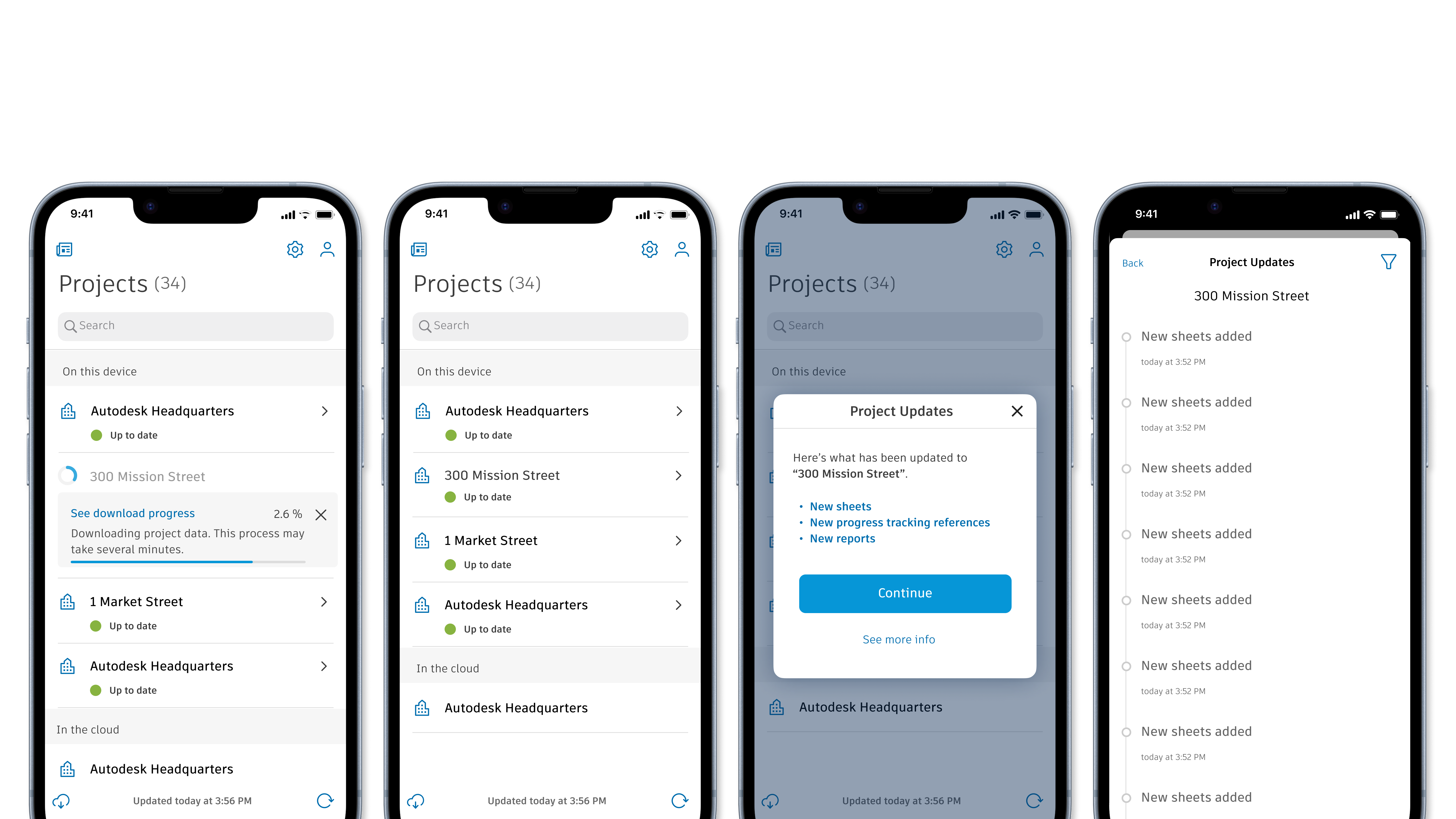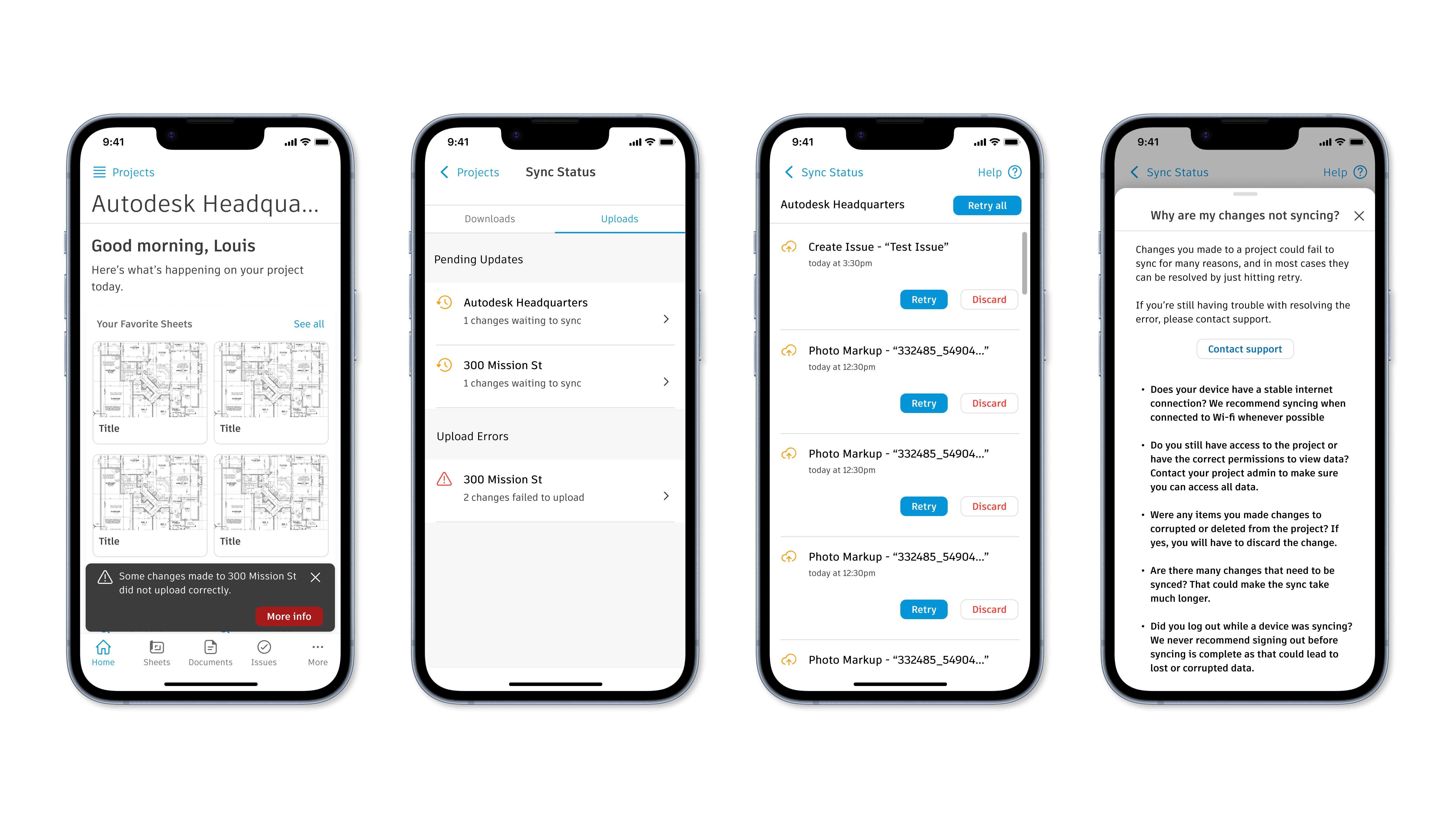.png)
Autodesk Build is the flagship application of the Autodesk Construction Cloud, a suite of products built to help construction teams manage every step of their projects. In the summer of 2021, I interned as a UX Designer at Autodesk, where I designed improvements to the Autodesk Build mobile app and design system.
Autodesk Build is a web and mobile product. Users in more managerial roles are likely to use the product in its web interface, while users with field-oriented roles typically use the product on a mobile device, like an iPad, to view project data while out on the construction site.
Syncing allows the PlanGrid Build mobile app to download project data from the cloud and lets users save and push any changes made on their mobile device to the web platform. This is an integral function of Autodesk Build considering many construction sites lack a stable internet connection, so the sync process is critical to maintaining shared knowledge amongst the managerial and field teams.
Before my internship began, the Autodesk Build team conducted user research to identify key areas for improvement regarding the app experience. Syncing was identified as a main topic that had many associated pain points. Key takeaways included:
The diagram below shows screenshots from the existing experience, highlighting the interface and the user pain points.
.png)
The first step to tackle this design challenge was to break down the overarching problem into smaller initiatives to focus on, something I collaborated with my design manager on. That way I could brainstorm flows for each of these initiatives and then see how solutions from different categories overlap and connect, which would ultimately help the design team decide which general direction to follow for proposing a solution to improve mobile sync.
The images below depict the constructed timeline of each initiative I brainstormed, followed by a culmination of my process work and individual solutions crafted to address each initiative.

.png)
After comparing and contrasting the different solutions, ultimately the team and I decided that the best direction was automatic syncing; a setting that when turned on by the user, would automatically sync projects the user specifies whenever the device is online.
We chose this solution because out of all the others, it addressed all the pain points expressed by users without having to introduce too many competing and complex steps.
Below are the final designs I created of a proposed auto-syncing feature for Autodesk Build.




After completing the final design review and prior to my internship ending, I performed user testing of the automatic syncing prototype I built in Figma with several Autodesk Build customers, and the feedback was overwhelmingly positive with a few suggestions.
Customers said the automatic syncing setup was "easy to follow and figure out".
Customers really liked the ability to turn on auto syncing for projects only.
Customers would've preferred if certain assets had more prominent alerts when updated vs. others.
After my internship concluded, the design team incorporated the user feedback into the designs and the new auto sync features were released later that year, and helped achieve the following KPI's observed in Q1 2022 for Autodesk Build.
44%
reduction in Sync related support tickets reported by customer support.
39%
increase in daily active users in superintendants and project managers, based on customer surveys
33
minutes on average saved per day for superintendents when using automatic syncing for their projects.
Throughout this project, I learned a lot of valuable lessons about end-to-end product design and development:
1. Don't fall into the trap of creating high-fidelity wireframes too soon. Staying in low-fidelity earlier allows you to rapidly iterate across multiple ideas to identify the best solution.
2. Design systems - when properly managed - are critical to product teams' success because they allowed me to rapidly transition from low to high fidelity.
3. Any problem statement or product epic, no matter how complex, can be solved if properly broken down into sub problems or journeys that you can tackle one at a time.